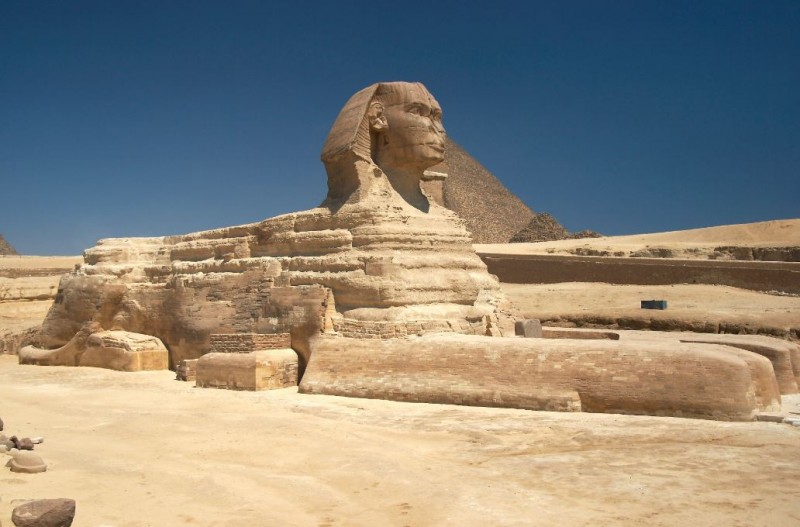
The Sphinx of Giza is an iconic monument that has captured the imagination of people for centuries. Situated on the Giza Plateau in Egypt, this majestic limestone statue stands as a testament to the ancient civilization's architectural prowess and artistic mastery. However, the Sphinx also carries an air of mystery, with numerous theories surrounding its true age and original purpose. In this article, we will delve into the enigma of the Sphinx and explore the various theories put forth by experts and researchers.
The Sphinx: Unraveling the Enigma
The Sphinx stands proudly on the Giza Plateau, facing eastward with the body of a lion and the head of a human, believed to represent the pharaoh Khafre. Its immense size, measuring approximately 73 meters (240 feet) in length and 20 meters (66 feet) in height, adds to its grandeur and allure. The Sphinx has become an enduring symbol of ancient Egypt, attracting countless visitors from around the world who are fascinated by its enigmatic presence.
The Appearance and Structure of the Sphinx
The physical characteristics of the Sphinx are awe-inspiring. The meticulous craftsmanship and attention to detail exhibited in its construction reflect the ancient Egyptians' mastery of stone carving. The statue's body, resembling a crouching lion, symbolizes strength and power, while the human head signifies intelligence and wisdom. Some theories suggest that the combination of these features represents the union of the pharaoh's authority with the divine.
Theories on the Age of the Sphinx
Determining the exact age of the Sphinx has been a subject of debate among scholars. The traditional Egyptological view dates the monument to around 2500 BCE during the reign of Pharaoh Khafre. However, alternative theories have emerged, challenging this timeline. Some experts propose that the Sphinx is much older, pointing to geological evidence of water erosion that could suggest an age as far back as 7000 to 9000 BCE. This theory raises intriguing questions about the civilization responsible for its creation and the level of technology they possessed.
Theories on the Original Purpose of the Sphinx
The Sphinx's original purpose remains a matter of speculation. One prevailing theory is that it served as a guardian for the nearby pyramids, protecting the burial site of the pharaohs. Others propose an astronomical significance, suggesting alignments with celestial bodies and serving as a celestial marker. Additionally, the Sphinx has been interpreted as a representation of divine power, symbolizing the connection between the pharaoh and the gods.
Controversies and Debates Surrounding the Sphinx
Throughout history, the Sphinx has undergone several alterations and repairs, leading to debates about its authenticity and original form. The missing nose and beard, for instance, have sparked curiosity and even inspired numerous legends. Vandalism has also taken its toll on the monument, prompting restoration efforts to preserve its magnificence for future generations.
Modern Research and Technological Advancements
Advancements in archaeology and technology have allowed researchers to gain new insights into the Sphinx. Excavations around the monument have revealed hidden chambers and passages, shedding light on its construction and purpose. Non-invasive techniques such as ground-penetrating radar and geophysical surveys have also been employed to further explore the mysteries surrounding the Sphinx and its surroundings.
Conclusion
The Sphinx continues to captivate our imagination with its ancient allure and the many unanswered questions it poses. As we delve deeper into its mysteries, the enigma surrounding its true age and original purpose only grows. The various theories put forth by experts provide glimpses into the rich history and profound symbolism embedded in this remarkable monument. The Sphinx stands as a testament to the ingenuity and cultural significance of the ancient Egyptians, leaving us in awe of their achievements.
Hyderabad's Historical Gems: Top 5 Places to Immerse Yourself in the City's Heritage
Varanasi attractions and top 10 places to visit and its historical importance
Bangalore Metro Trials for Two New Sections to Start Next Month